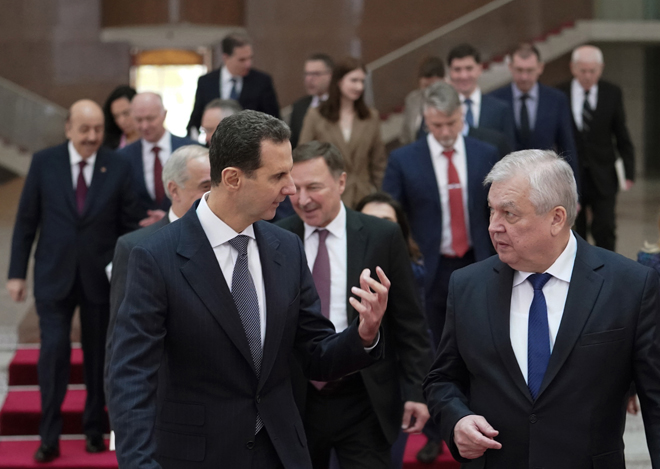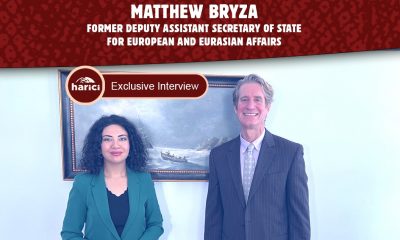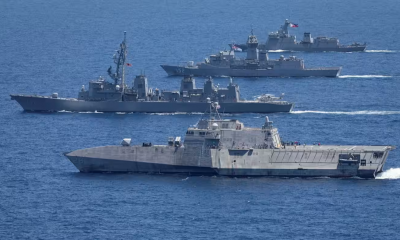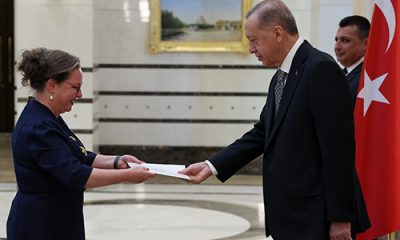Bashar Assad, President of Syria, welcomed Russian President Vladimir Putin’s Special Envoy to Syria, Alexander Lavrentiev, and his entourage. Normalizing relations with Turkey and other regional issues were reviewed during the meeting held in Damascus.
“In order for the meetings with the Turkish side to be fruitful and reach tangible goals and results that Syria wants from these meetings, they must be based on coordination and prior planning between Syria and Russia,” said the Syrian President.
Damascus expects Turkey “to end the occupation in Syrian territories and the support for terrorism,” Syrian President Assad told Putin’s delegate Lavrentiev.
Lavrentiev praised the tripartite summit in Moscow in the meeting, stressing the need to follow up on these meetings at the foreign ministers’ level.
Iran’s Foreign Minister Hossein Amir-Abdollahian, on a diplomatic visit to Beirut, the capital of Lebanon, also expressed that they welcomed the dialogue between Syria and Turkey. “We believe that it will reflect positively between the two countries,” added Abdollahian.
Arguing that “the United States does not have a policy of a regime change in Syria,” US State Department Spokesperson Ned Price has said that the US does not support the normalization process between Turkey and Syria. As for the “atrocities” perpetrated by the Assad regime in Syria, according to Price, he should be held to account for these “crimes against humanity.”
What has happened so far in normalization?
Turkey and Syria both made positive statements after the defense ministers of Turkey, Russia, and Syria met in Moscow on December 28. Damascus’s Al-Watan daily reported the next day that the contacts had been made in a “good mood.” The Turkish President, Recep Tayyip Erdoğan, also reiterated his hopes to meet with his Syrian counterpart, Bashar al-Assad, on a particular schedule.
The second half of January was reportedly scheduled to move military relations up to the diplomatic level. However, Foreign Minister Mevlüt Çavuşoğlu announced that this meeting might take place at the beginning of February.
Several factors are at play contributing to the delay in the meeting. Damascus sees the presence of Turkish troops in Syria and Ankara’s support for the Free Syrian Army as a significant problem.
For instance, the statement of Yasin Aktay, chief advisor to the President of the AK Party and writer for Yeni Şafak, that “Aleppo should be placed under the control of Turkey with a temporary status” is a striking example that amplifies the security concerns of the Syrian side.
During the talks, another fundamental setback is Ankara’s refusal to approve Damascus’s demand that Turkish support be cut from the FSA during negotiations. Damascus claims that the Turkish military’s institutional presence in Syria is the sole force keeping afloat the FSA, which requests a share in the government.
To the Lebanon-based Al Mayadin on the day of the Assad-Lavrentiev meeting, senior Syrian sources revealed that “Damascus is not interested in presenting the card of making concessions to Ankara, the withdrawal of the Turkish army from all Syrian territories should be clarified, and the meeting between the Foreign Ministers is not scheduled as Damascus still has not approved yet.” Syria has been making these same points for a long time, and within them are signals somehow aimed at Russia.
In brief, Syria wants Russia to honor its promise to remove Turkey from Syrian territory appropriately. Before unconditionally reaching tangible goals, restates Damascus, Syria has no interest in turning into leverage that may be used in the election campaign in Turkey by intensifying the diplomacy.
Despite Moscow’s insistence, Damascus’s slow rapprochement with Turkey may be partially explained by Damascus’s ongoing normalization with Arab nations in the background. In other words, Syria is engaging in feverish efforts to turn back not just with Turkey but also with the rest of the Arab world. And the circumstance provides a variety of advantages.
Furthermore, progress is being made more quickly on that front than with Turkey. The United Arab Emirates (UAE) seems to be one step ahead in normalizing relations with the Arabs. Having visited Damascus twice since November, Emirati FM Abdullah bin Zayed Al Nahyan met with Syrian leader Assad on January 4 and facilitated correspondence between Riyadh and Damascus. For the past year, the head of Syrian intelligence, Husam Luka’s close correspondences with his Saudi counterpart, Khalid bin Ali Khomeyan, is considered an indicator of thawing ties in Saudi-Syrian dialogue.
Foreign Ministers from Saudi Arabia and Egypt met on January 12 in Cairo and conveyed the message “Do not interfere in Arab states’ internal affairs” to Iran and Turkey. The two countries “rejected any military threats that infringe on the Syrian territories.”
The latest developments have pushed Ankara to find the right time in these multiple “normalizations.” As relations between Ankara and Damascus improve, Damascus is working to normalize with other Arab countries. Meanwhile, Iran also has efforts in this direction, and Ankara’s reconciliation attempts with Saudi Arabia, Egypt, and the United Arab Emirates (UAE) continue. Iran is also working in this direction. Although reconciliation with Syria would have been easier for Ankara five years ago, Ankara should now consider the demands of Damascus, which gained the upper hand in a multi-actor normalization.


 INTERVIEW1 week ago
INTERVIEW1 week ago
 INTERVIEW2 weeks ago
INTERVIEW2 weeks ago
 INTERVIEW3 days ago
INTERVIEW3 days ago
 EUROPE2 weeks ago
EUROPE2 weeks ago
 ASIA2 weeks ago
ASIA2 weeks ago
 EUROPE1 week ago
EUROPE1 week ago
 DIPLOMACY2 weeks ago
DIPLOMACY2 weeks ago
 AMERICA2 weeks ago
AMERICA2 weeks ago
















